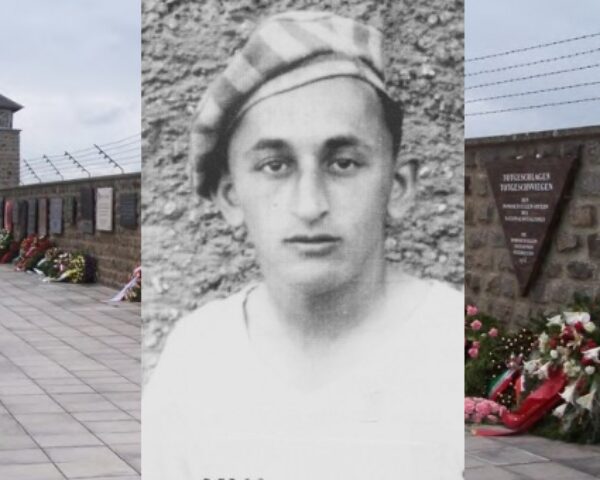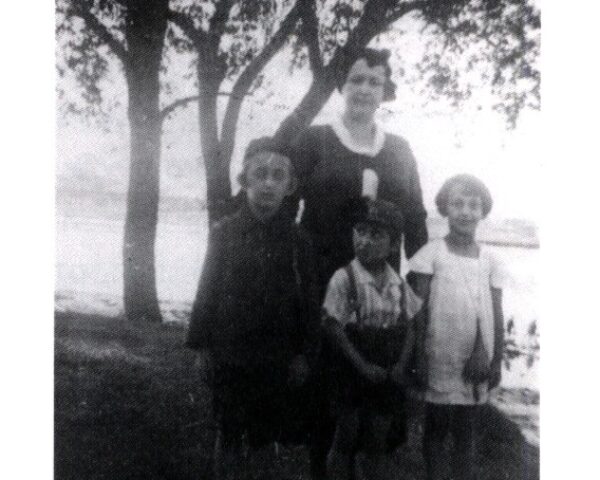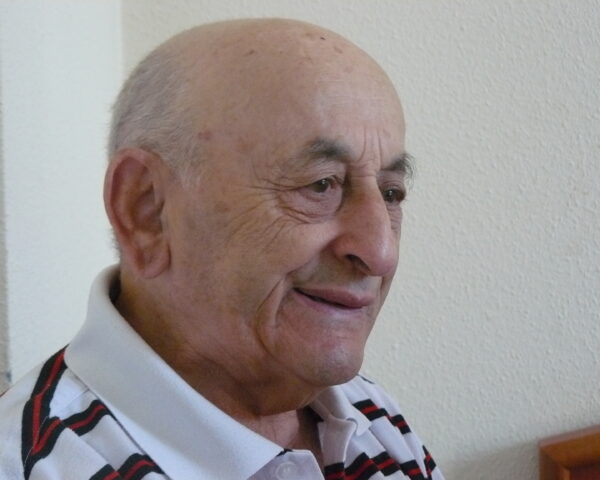Markus Lustig was born in a Jewish district in Nowy Sącz in 1925. His parents, Ita Kanengisser and Jakub Lustig, were very religious and raised their children that way, too...
Markus Lustig
Markus Lustig was born in a Jewish district in Nowy Sącz in 1925. His parents, Ita Kanengisser and Jakub Lustig, were very religious and raised their children that way, too. Markus had an older sister, Rachela, and a younger brother, Mosze. He went to a Talmud school and wanted to become a rabbi.
After World War II broke out, Markus worked in several different places, including a train station and a soda factory. He miraculously escaped arrest and death numerous times. Often, he was the only one who was able to earn the family’s living. Risking his life, he would sell cigarettes, saccharine and yeast. During the so-called “cigarette operation” in the ghetto, he nearly got arrested. His friends, who were also illegal merchants, were shot on the Jewish cemetery during the operation. In April 1942, the Germans started the so-called “April operation”. On 29th April, they shot 300 people on the Jewish cemetery, and in the night following the execution, they entered the ghetto and started a massacre. The soldiers entered the Lustigs’ flat as well. They asked Markus’ father what his profession was and he said that he was a bookbinder. The soldiers then told him to turn around and shot in the back of his head. After that, they killed Markus’ mother and sister and proceeded to his room. Markus hid under his blanket. The soldiers shot his brother, but they did not notice him. For long hours, Markus lay still, listening out, while his brother’s blood ran down his body. When it became silent all around, Markus went into his parents’ room. He could not even recognize their faces. There were pillow feathers and stains of blood all around. He was left all alone.
Later on, Markus was sent as forced labourer to the Rożnów labour camp. After the Nowy Sącz Ghetto was shut down, he was transferred to a camp in Rytro and then to Rzeszów, where he had to work in a factory that built and serviced planes. There, he contracted typhus, but he managed to survive. Afterwards, he volunteered to go to the Pustków camp, where his task was to build new barracks. In March 1944, he was transferred to KL Płaszów. There, he was saved from certain death by Oskar Schindler, who bought him and other inmates out in search for cheap labour for his enamel factory in Cracow. This way, Schindler provided shelter to about 1100 Jewish men and women. Markus Lustig’s task was to stamp metal sheets in order to produce grenade parts. Years later, he described his job and the conditions in the enamel factory with the words: “I was as snug as a bug in a rug.”
In August 1944, part of the workers of the factory were sent to Austria. After an exhausting transport, Markus reached the Mauthausen camp where he got the prisoner number 85366. He worked at a tunnel digging site and had to carry such heavy loads that he nearly collapsed.
On 6th May 1945, Markus Lustig was liberated by the American army in the Melk camp. He volunteered to join the US army and was put in charge of the Officers’ Club. Later on, he moved to Israel, started a family and took up a job in the construction industry. He also appeared in nearly 170 movies as a statist. During the last years of his life, he was Chairman of the Society of Jews from Nowy Sącz in Israel.
Preparation
During the preparation stage of genocide, specific language is often used; the planned crimes are not spoken of directly and literally (e.g., “the final solution to the Jewish question”). Armies are created, weapons are purchased, special troops are trained. At the same time, society is subjected to intensive indoctrination to instil fear of the victim group, and genocide is sometimes presented as necessary self-defense. If an armed conflict is ongoing, genocide is sometimes camouflaged as anti-guerrilla warfare.
To prevent genocide, a state of emergency should be declared at this stage apply diplomatic pressure and also intervene to prevent the crime.
How does this person’s story illustrate response to the particular stage of genocide in Dr. Stanton’s theory?
Markus Lustig witnessed the preparation and implementation of the Nazi plan to exterminate all European Jews. He himself was subject to reprisals and other actions which ultimately led to genocide. In his home town of Nowy Sącz, he could observe the preparations for the discrimination, isolation and later the mass murder of Jewish people. Although Markus himself was a victim of this long-planned, multistage crime, he never lost his will to live. After the war, he led an active life and shared his story with the next generations in order to demonstrate what hatred and evil can lead to.




